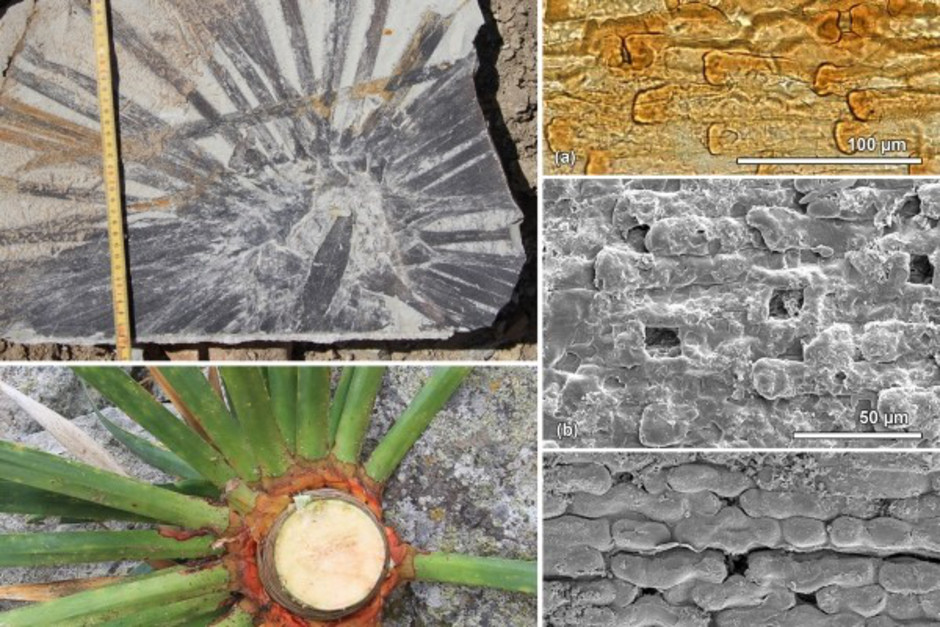Forskningsområden: Paleontologi
Forskningsämnen: Blomväxter och släkten, Fossil
Project overview
Project period: 2022 - 2026
Participating departments from the museum: PAL
This project will use the fossil record of plant lineages that occurred in temperate regions during large parts of the Cenozoic in order to investigate the relative roles of niche conservatism and niche evolution to the change of distributional patterns in these lineages through time. Fossil plant assemblages from the western and eastern Mediterranean regions will be investigated spanning the period from the Oligocene to the Pliocene (34 to 2.6 million years ago).
Project description
The distribution of plant lineages commonly has changed through geological times. Distribution ranges change because of two major processes:
- Niche evolution associated with biome shifts (lineages evolve and disperse into new habitats)
- Niche conservatism, where range change is related to the geographic dislocation of a plant lineage’s niche due to climate change and other abiotic factors
The distinction of these processes is essential in order to understand how woody angiosperms (trees and shrubs) responded to past and will respond to ongoing environmental changes. It is also essential when attempting to trace the emergence of major new biomes in the history of earth.
The aim of the project is to understand the adaptive radiation of once (humid) temperate plant groups into a wide range of modern biomes including tropical, seasonal summer-dry, and arid biomes. This will be achieved by integrating available phylogenetic studies with information from key fossil plant taxa and exceptionally rich fossil plant assemblages.
High-resolution taxonomic assessments making use of macroscopic and microscopic morphological features of plant fossils will form the basis for detailed investigations of potential niche evolution or niche conservatism.
Addressing these research questions using an integrated historical and modern approach is highly innovative as it will be relevant to many palaeoecological studies and to understanding responses of today’s north temperate woody vegetation to ongoing environmental shifts.
Funding
- Carl Tryggers Stiftelse (https://www.carltryggersstiftelse.se/
 External link.)
External link.) - Swedish Research Council – Vetenskapsrådet (https://www.vr.se/
 External link.)
External link.)
Selected publications
- Denk, T., Bouchal, J. M., Güner, H. T., Coiro, M., Butzmann, R., Pigg, K. B., & Tiffney, B. H. (2023). Cenozoic migration of a desert plant lineage across the North Atlantic. New Phytologist, 238(6), 2668-2684. https://doi.org/10.1111/nph.18743
 External link.
External link. - Vieira, M., Zetter, R., Grímsson, F., & Denk, T. (2023). Niche evolution versus niche conservatism and habitat loss determine persistence and extirpation in late Neogene European Fagaceae. Quaternary Science Reviews, 300, 107896. https://doi.org/10.1016/j.quascirev.2022.107896
 External link.
External link. - Denk, T., Güner, H. T., & Bouchal, J. M. (2022). Catalogue of revised and new plant macrofossils from the Aquitanian-Burdigalian of Soma (W Turkey)–Biogeographic and palaeoclimatic implications. Review of Palaeobotany and Palynology, 296, 104550. https://doi.org/10.1016/j.revpalbo.2021.104550
 External link.
External link. - Adroit, B., Teodoridis, V., Güner, T. H., & Denk, T. (2021). Patterns of insect damage types reflect complex environmental signal in Miocene forest biomes of Central Europe and the Mediterranean. Global and Planetary Change, 199, 103451. https://doi.org/10.1016/j.gloplacha.2021.103451
 External link.
External link. - Bouchal, J. M., Güner, T. H., Velitzelos, D., Velitzelos, E., & Denk, T. (2020). Messinian vegetation and climate of the intermontane Florina–Ptolemais–Servia Basin, NW Greece inferred from palaeobotanical data: how well do plant fossils reflect past environments? Royal Society Open Science, 7(5), 192067. https://doi.org/10.1098/rsos.192067
 External link.
External link.
Project members
- Benjamin Adroit
- Kristel van Zuijlen
Project manager


